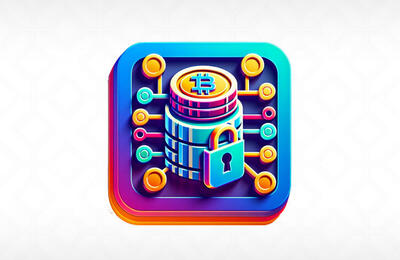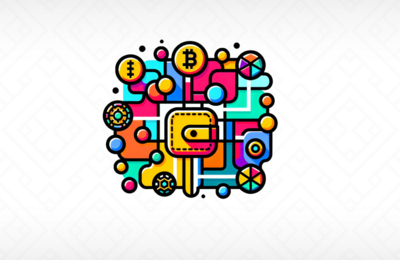
Like many technologies now critical in our day-to-day lives, blockchain has been exhibiting a consistent evolution. Today, blockchain has carved a niche among mainstream technologies, and its demand has continued to rise.
As of 2017, the global blockchain market was worth about USD$339.5 million, and it has since grown to USD$4.9 billion in 2021. During the forecast, the market was predicted to expand to a global worth of USD$6.7 billion by 2026, therefore, showing a compound annual growth rate (CAGR) of around 68.4%.
The rapid growth of blockchain is linked to its increasing uses. Initially, blockchain was limited for the financial industry, with its biggest consumers being the banking sector. However, this has since changed, as different sectors are adopting the technology, from academia, health care, government services to logistics and supply chain. The extensive consumption of blockchain has led to many experiments of its potential use that have contributed to its change.
This article will break down blockchain technology and how it has changed over the years.
What Is Blockchain Technology?
A blockchain is a digital ledger or database that's used to record, manage and track assets and transactions over a decentralized computer network. Unlike a traditional database, blockchain collects data in blocks with a maximum storage capacity. Once a block is full, it's closed and linked with other blocks holding similar data to form a chain of blocks hence the name blockchain.
When the concept was introduced in 2008, blockchain was built to ensure that transactions using cryptocurrency like Bitcoin remain secure and reliable without needing an intermediary like a bank. However, blockchain technology has since evolved to allow more intelligent uses in decentralized transactions such as liquidity pools with more innovations and advancements. Besides its uses in cryptocurrency, blockchain is being used for more advanced tasks highlighted in the next section.
Here's how blockchain has changed since its conception.

1. The Development Of Ethereum
As mentioned before, Bitcoin was the first application of blockchain technology. However, developers didn't stop at that. While trying to maximize the use of a digital database, they developed Ethereum, the second blockchain application.
Like Bitcoin, Ethereum is a cryptocurrency that allows autonomous transactions without needing a bank or a financial institution. However, Ethereum is an advancement of bitcoin. It, therefore, has more features and functions. They include:
Anonymous Transactions
Ethereum allows its users to transact anonymously on a blockchain. However, the transaction is still tracked for security purposes without publicizing the user's information.
Smart Contracts
Smart contracts are digitally stored agreements that automatically execute when the terms and conditions of the contract are met. To use a smart contract, both parties of the transaction agree on a given set of requirements and actions. These requirements are written into codes to form a digital contract. When all the steps in the agreement are met, the blockchain through Ethereum is updated, and the transaction is complete. These requirements could be the release of funds or issuing tickets, among others.
Smart contracts are used to ensure transparency between transacting parties even if they don't know each other. Once a transaction is complete, it can't be undone. Therefore, each party is forced to honor the contract.
Use Of Digital Apps
Ethereum allows the use of digital apps that require payments using cryptocurrency. As such, you can play games, use social media, or send money using these digital apps.

2. Development Of Proof Of Stakes
Since blockchain is a decentralized database of transactions, there has to be a system of determining which transactions are valid and which ones aren't. Developers came up with proof of stake (PoS), a mechanism for agreeing on valid transactions. Without PoS, any user could come up with fake transactions.
Blockchain uses individuals known as nods to process transactions. A nod that approves a valid transaction is known as a validator. These validators can add blocks to existing chains, therefore growing the digital ledger.
In PoS, each nod commits funds to the blockchain for a chance to be chosen as the next validator. The choice of the next validator and block writer is a random process. However, the higher the amount staked, the greater the chances of selection. As a reward to the winning validator and block writer, the staked funds are given to them.
PoS has come to replace the technology of Proof of Work (POW) which required the nods to compete amongst themselves to be the next block writer. The winning nod had to have the largest computing power, and they were known as miners.
3. Scaling
After adopting blockchain to process transactions across many computer networks, the process became slow. However, this has since been sorted through improved scalability. Blockchain has accelerated its transaction process by identifying the number of computers needed for each transaction and dividing the workload efficiently.
Although upgraded speed comes with the risk of security, among other loopholes, scaling has ensured that blockchain remains secure and robust in its operations.
To Sum It Up
Since its conception in 2008, blockchain has undergone various changes. The common thing about all these changes is that they all make the use of blockchain easier and more robust. Therefore, since we live in a fast-paced modern world, blockchain technology is expected to change further to fit future technology needs. As a result, its popularity and growth are also expected to skyrocket in the coming years.















